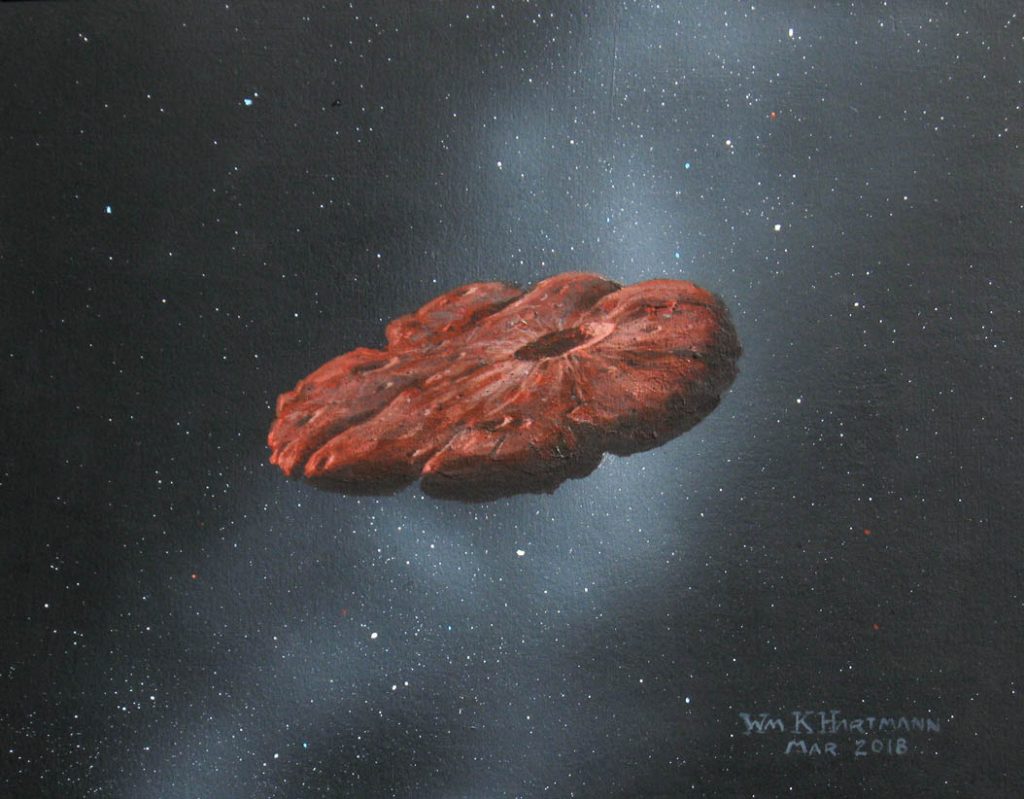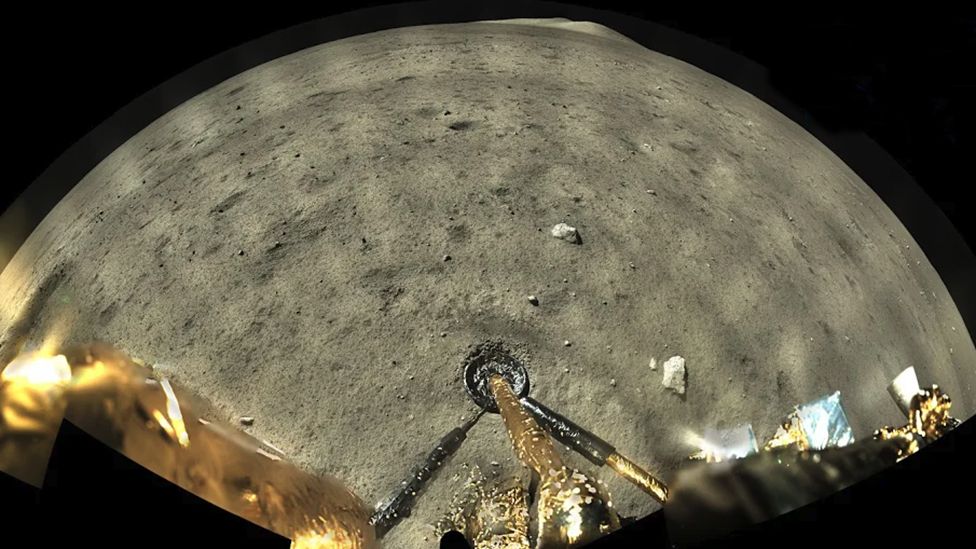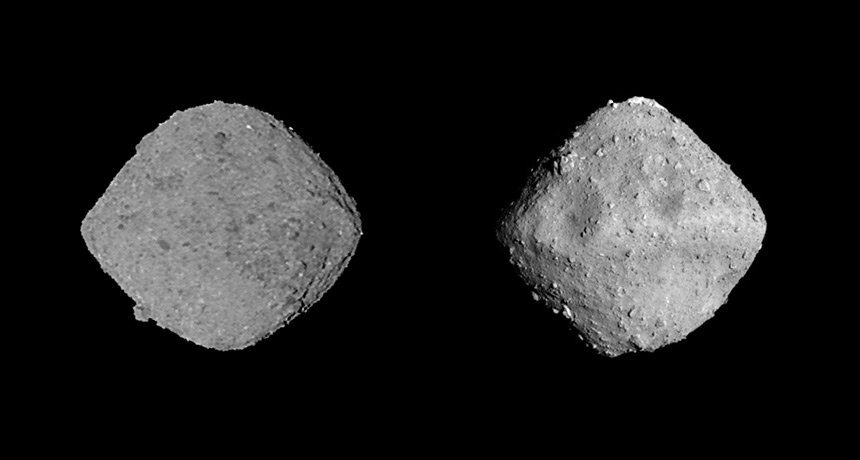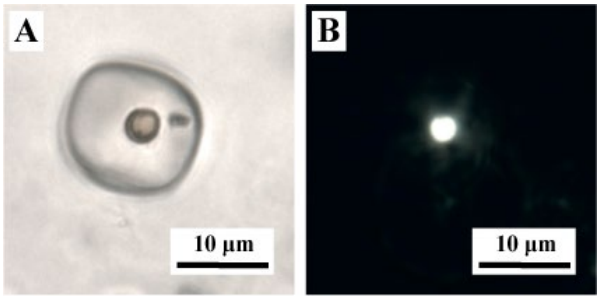We interview a pair of scientists who have examined microorganisms embedded in halite crystals to determine the feasibility of finding similar evidence of past life in return samples from Mars. Plus, ‘Oumuamua, Bennu, Ryugu, winds on Jupiter and a space jellyfish.
Media
Transcript
Hello and welcome to the Daily Space. I am your host Dr. Pamela Gay.
And I am your host Beth Johnson.
And we are here to put science in your brain.
At the close of yesterday’s episode, we mentioned that NASA had planned a test firing of the engines for their SLS rocket system. We are pleased to share that the test-firing went off without any visible problems, and the firing lasted the expected duration. Annie will discuss this more next Wednesday during Rocket Roundup.
We also shared that President Biden had announced his picks for the new NASA administrator. We now know he also announced the pick for deputy. These picks are former Florida senator and astronaut Bill Nelson and retired astronaut Colonel Pamela Melroy.

First elected to the House of Representatives in 1978, Bill Nelson served as a representative until 1991. It was during this time that Nelson was a payload specialist on the Space Shuttle Columbia for STS-61-C in January 1986, the last successful space shuttle flight prior to the Challenger accident, and made him the second sitting member of Congress to travel into space.
In 2000, he was elected to the Senate, where he was active on the Committee on Commerce, Science and Transportation and worked on subcommittees as an advocate for NASA and space exploration. In May 2019, he was appointed to serve on NASA’s advisory council as a member-at-large. Then NASA Administrator Jim Bridenstine, stated that “Nelson is a true champion for human spaceflight and will add tremendous value as we go to the Moon and on to Mars.”
Pam Melroy is a retired USAF officer who was a member of the 1994 NASA astronaut class. She was pilot on STS-92 on Discovery in 1998, and for STS-112 on Atlantis in 2002, and then mission commander of STS-120 on Discovery in 2007. After leaving NASA in August 2009, she served as Deputy Program Manager for Space Exploration Initiatives with Lockheed Martin before returning to the public sector in 2011 when she joined the FAA as a senior technical advisor and director of field operations for the FAA’s Office of Commercial Space Transportation and then as the Deputy Director of the Tactical Technology Office at the Defense Advanced Research Projects Agency, or DARPA.

While Nelson and Melroy’s advocacy for NASA can’t be denied, there is concern that this could signal a return to a more traditional space program that relies on the large aerospace companies like Lockheed Martin and Boeing, rather than newer companies like SpaceX. Time will tell whether this concern will be borne out. Whatever happens, we’ll bring it to you here on the Daily Space.
In other news, scientists have published yet another novel theory to try and explain the really bizarre object, ‘Oumuamua, that was discovered in 2017. With a trajectory that indicates it originated somewhere outside our solar system and a cigar-like shape reminiscent of the ship in the novel Rendezvous with Rama, this bizarre object has been explained as being anything from a tidally distorted asteroid to an actual spacecraft.

In new research presented at the Lunar and Planetary Science Conference (LPSC), researchers Steven Desch and Alan Jackson explain that ‘Oumuamua’s behavior near the Sun is consistent with it being a chunk of solid nitrogen gas. While this kind of composition is just plain weird for a comet, we do see it on the surface of Pluto, and they theorize that ‘Oumuamua was knocked off an alien planet and sent on its journey toward Earth.
According to Jackson: It was likely knocked off the surface by an impact about half a billion years ago and thrown out of its parent system. Being made of frozen nitrogen also explains the unusual shape of ‘Oumuamua. As the outer layers of nitrogen ice evaporated, the shape of the body would have become progressively more flattened, just like a bar of soap does as the outer layers get rubbed off through use.
This theory matches the observations nicely, but with ‘Oumuamua on a fast path to leave our solar system, we will likely never know if this, or one of the other theories, is the real answer.
With a lot of science, we look for similarities between objects, and then try and determine if similar science is responsible for those similarities. There are cases, however, where we know form does not follow function. For instance, researchers using radio telescopes spotted what appears to be a jellyfish in space, and it’s a pretty good guess that the tentacles of light aren’t there to sting prey.

This odd shape is only visible in a small range of radio wavelengths. In fact, with a sensitive enough FM radio, you could detect it, but if you go past the dial to 200MHz, it disappears. According to lead author Torrance Hodgson: We’ve had to undertake some cosmic archaeology to understand the ancient background story of the jellyfish. Our working theory is that around 2 billion years ago, a handful of supermassive black holes from multiple galaxies spewed out powerful jets of plasma. This plasma faded, went quiet, and lay dormant. Then quite recently, two things happened–the plasma started mixing at the same time as very gentle shock waves passed through the system. This has briefly reignited the plasma, lighting up the jellyfish and its tentacles for us to see.
This work is presented in The Astrophysical Journal.
As an amusing side note to this story, all the graphics were labeled “USS Jellyfish”, and we thought that just once an astronomer had given something a truly fabulous name. Well, they did, but that USS isn’t a humorous reference to ships; it is actually an abbreviation for Ultra Steep Spectrum, which is a fancy way of saying you see it FM but you don’t see it at other frequencies. So yes, this jellyfish-looking object is officially named the USS Jellyfish, and it makes its home in the Galaxy Cluster Abell 2877.
Today marks the end of this year’s Lunar and Planetary Science Conference, but many of us are already looking forward to meetings in the future. This is because we know our colleagues have cool new rocks to study, and the best is, in some ways, yet to come.
A lot of geologists get their start as rock collecting kids. The biggest change from those kids to the researchers I get to work with is the power of the microscopes they now get to use looking at their rocks. Oh, and some of their rocks now come from outer space.

Right now, three nations, in particular, are going all out on bringing rocks back to Earth. The Chang’e series of missions to the Moon sent Chang’e 5 up in December, and this mission brought back the first lunar samples collected from young lava deposits – called mare basalts – on the moon. Ahead of the mission, it was estimated these deposits are just 1.2 billion years old, and now everyone is holding their breath while we wait for actual rock ages to be measured. In combination with the Apollo and Luna rock samples, this will allow us to better calibrate the impact history on the Moon and the actual ages of the different features we, and our spacecraft, can see.
This Chinese mission made going to the moon look easy. For those of us in Gen X and younger, we don’t remember the scary moments of humanity’s first attempts at landing on the Moon. One of the oft-forgotten concerns was that the Moon’s surface would be centimeters to meters deep in dust, and the spacecraft would simply sink like Luke’s X-wing in the swamps of Dagobah.
This concern was so well forgotten that it wasn’t brought up with the sample collection missions to Ryugu or Bennu. And here we have a fascinating tale of two worlds that look really alike and really are not.
The Japanese Hayabusa2 team bombed their asteroid, and it just made a crater. They dropped a bunch of tiny robots, and they all bounced around happily. Ryugu, which is a pile of rocks, is a pretty solid object, and the sample collection process went off without a problem, with multiple samples being successfully grabbed and returned to Earth. Now those rocks are getting divided up as agreed and analyzed by researchers around the world. Soon, or at least by the next LPSC, we’ll have analysis showing compositions, ages, and more. The samples are here! And they are awesome.

But, as I mentioned yesterday, the situation for little OSIRIS-REx is a bit different. This US-based mission found the asteroid Bennu to have a surface consistency like that of a ball pit. A very, very deep ball pit. The mission punched roughly 0.5 meters into Bennu and had to fire thrusters to stop its downward plunge. I mentioned this part yesterday. What I learned later is that it’s estimated the spacecraft would have descended many meters into Bennu; this means it could have submerged itself, folks.
At a certain point, this is unsurprising. This is a tiny object and its gravitational pull on a human would be about the same as the Earth’s pull on a piece of paper. If it is rubble all the way through, and not just on the surface, it is the consistency of a ball pit. To get a better understanding of this weird reality, the team is planning to fly OSIRIS-REx over its sample site before the mission heads home in May, and they’re going to take high-resolution images of their encounter site. We’ll get to see for ourselves: did OSIRIS-REx make a crater like Hayabusa2 did, or did the hole fill itself in like would happen at a ball pit?
We have spent all week, and several of the past few weeks, talking about finding evidence of past life, if not life itself, on Mars in the coming years. With Perseverance on the ground, NASA is now planning the sample return mission that will bring rocks back from the red planet, allowing us to study them up close with all the tools possible.

What will finding evidence look like? In a poster presented at the Lunar and Planetary Science Conference this week, graduate student Sara Schreder-Gomes and Dr. Kathleen Benison examined halite crystals from Australia. Embedded in those crystals were possible microorganisms such as algae and prokaryotes. Their work was essentially a feasibility study of whether or not we can find life inside potential samples from Mars. Mars, of course, is a very dry planet, and there are lots of similar evaporite minerals on the surface that could be sampled.
And all you need are really good microscopes and an idea of what to look for. With this poster, Sara and Dr. Benison have provided future scientists with just such information.
We are pleased to have Sara and Dr. Benison with us today. Sara is a graduate student in geology at West Virginia University, and Dr. Kathleen Benison is a professor of geology who is currently studying “modern acid saline lake systems in Western Australia and Chile”. She is also a Science Editor for the journal Geology and was selected as a participating scientist for return sample selection for the Mars 2020 mission.
Thank you, Sara and Dr. Benison, for joining us today. First off, did I sum up your work correctly? Is there anything you want to add?
[Interview]
This has been the Daily Space.
Learn More
President Biden Nominates Bill Nelson for NASA Administrator
- White House press release
- NASA statement
Another ‘Oumuamua Theory: Flattened Chunk of Nitrogen Ice
- Arizona State University press release
- “1I/‘Oumuamua as an N2 ice fragment of an exo‐Pluto surface: I. Size and Compositional Constraints,” Alan P. Jackson and Steven J. Desch, 2021 March 16, JGR Planets
- “1I/‘Oumuamua as an N2 ice fragment of an exo‐pluto surface II: Generation of N2 ice fragments and the origin of ‘Oumuamua,” S. J Desch and A. P Jackson, 2021 March 16, JGR Planets
Space Jellyfish Seen in Radio Wavelengths
- ICRAR press release
- “Ultra-steep-spectrum Radio “Jellyfish” Uncovered in A2877,” Torrance Hodgson et al., 2021 March 10, The Astrophysical Journal
LPSC: Lunar and Asteroid Samples
- The Scientific Achievements by Chang’E-4 and the New Lunar Samples Returned by Chang’E-5 (LPSC abstract)
- Handling and Description of C-Type Asteroid Ryugu Samples Returned by Hayabusa2 (LPSC abstract)
- The OSIRIS-REx Touch-and-Go Sample Acquisition Event and Implications for the Nature of the Returned Sample (LPSC abstract)
How to Find Evidence of Life in Ancient Salt Crystals
Credits
Written by Pamela Gay and Beth Johnson
Hosted by Pamela Gay and Beth Johnson
Audio and Video Editing by Ally Pelphrey
Content Editing by Beth Johnson
Intro and Outro music by Kevin MacLeod, https://incompetech.com/music/


 We record most shows live, on Twitch. Follow us today to get alerts when we go live.
We record most shows live, on Twitch. Follow us today to get alerts when we go live.